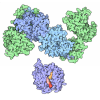Entry Database : PDB / ID : 6atdTitle Oxidized SHP2 forms a disulfide bond between Cys367 and Cys459 Tyrosine-protein phosphatase non-receptor type 11 Keywords Function / homology Function Domain/homology Component
/ / / / / / / / / / / / / / / / / / / / / / / / / / / / / / / / / / / / / / / / / / / / / / / / / / / / / / / / / / / / / / / / / / / / / / / / / / / / / / / / / / / / / / / / / / / / / / / / / / / / / / / / / / / / / / / / / / / / / / / / / / / / / / / / / / / / / / / / / / / / Biological species Homo sapiens (human)Method / / / Resolution : 2.5 Å Authors Page, R. / Peti, W. / Critton, D.A. Funding support Organization Grant number Country American Cancer Society RSG-08-067-01-LIB
Journal : ACS Omega / Year : 2017Title : Redox Regulation of a Gain-of-Function Mutation (N308D) in SHP2 Noonan Syndrome.Authors : Machado, L.E.S.F. / Critton, D.A. / Page, R. / Peti, W. History Deposition Aug 28, 2017 Deposition site / Processing site Revision 1.0 Jul 11, 2018 Provider / Type Revision 1.1 Jan 29, 2020 Group / Category / Item Revision 1.2 Oct 4, 2023 Group / Database references / Refinement descriptionCategory chem_comp_atom / chem_comp_bond ... chem_comp_atom / chem_comp_bond / database_2 / pdbx_initial_refinement_model Item / _database_2.pdbx_database_accessionRevision 1.3 Nov 13, 2024 Group / Category / pdbx_modification_feature
Show all Show less
 Open data
Open data Basic information
Basic information Components
Components Keywords
Keywords Function and homology information
Function and homology information Homo sapiens (human)
Homo sapiens (human) X-RAY DIFFRACTION /
X-RAY DIFFRACTION /  SYNCHROTRON /
SYNCHROTRON /  MOLECULAR REPLACEMENT / Resolution: 2.5 Å
MOLECULAR REPLACEMENT / Resolution: 2.5 Å  Authors
Authors United States, 1items
United States, 1items  Citation
Citation Journal: ACS Omega / Year: 2017
Journal: ACS Omega / Year: 2017 Structure visualization
Structure visualization Molmil
Molmil Jmol/JSmol
Jmol/JSmol Downloads & links
Downloads & links Download
Download 6atd.cif.gz
6atd.cif.gz PDBx/mmCIF format
PDBx/mmCIF format pdb6atd.ent.gz
pdb6atd.ent.gz PDB format
PDB format 6atd.json.gz
6atd.json.gz PDBx/mmJSON format
PDBx/mmJSON format Other downloads
Other downloads 6atd_validation.pdf.gz
6atd_validation.pdf.gz wwPDB validaton report
wwPDB validaton report 6atd_full_validation.pdf.gz
6atd_full_validation.pdf.gz 6atd_validation.xml.gz
6atd_validation.xml.gz 6atd_validation.cif.gz
6atd_validation.cif.gz https://data.pdbj.org/pub/pdb/validation_reports/at/6atd
https://data.pdbj.org/pub/pdb/validation_reports/at/6atd ftp://data.pdbj.org/pub/pdb/validation_reports/at/6atd
ftp://data.pdbj.org/pub/pdb/validation_reports/at/6atd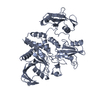
 Links
Links Assembly
Assembly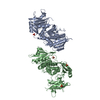
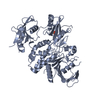
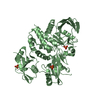
 Components
Components Homo sapiens (human) / Gene: PTPN11, PTP2C, SHPTP2 / Production host:
Homo sapiens (human) / Gene: PTPN11, PTP2C, SHPTP2 / Production host: 
 X-RAY DIFFRACTION / Number of used crystals: 1
X-RAY DIFFRACTION / Number of used crystals: 1  Sample preparation
Sample preparation SYNCHROTRON / Site:
SYNCHROTRON / Site:  NSLS
NSLS  / Beamline: X25 / Wavelength: 1.1 Å
/ Beamline: X25 / Wavelength: 1.1 Å Processing
Processing MOLECULAR REPLACEMENT
MOLECULAR REPLACEMENT Movie
Movie Controller
Controller




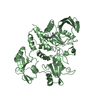
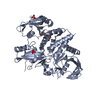
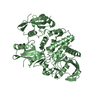


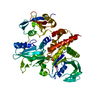
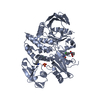
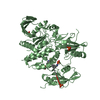
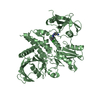
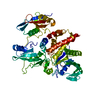


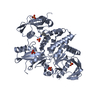

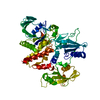

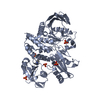

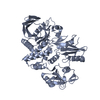
 PDBj
PDBj










